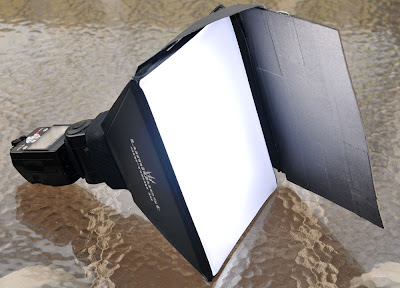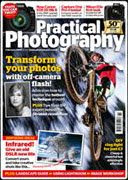I have played around with the LumiQuest Soft Box III enough now that it is one of the few light mods I always pack if I am gonna be shooting people. You don't use it like a normal soft box -- you want it in real close, so it gets softer and is powerful enough to overpower the sun.
But I also noticed that one of the things I love about it is that fast fall-off you get when working in very close, like in
this photo, shot for the ad. I love that soft light with fast fall-off so much that I have often found myself enhancing the fall-off with a nearby gobo.

This shot, if you'll remember, used the slightly smaller SB-II right overhead and a gobo in really tight to keep the light off of the top of his head. (A little fill was added in, too -- more
here.)
And when I use two SB-III's as rim lights I tend to put them in close enough so that I have to worry about lens flare. So I usually have to gobo them there, too.
That got me thinking: If I am usually gobo'ing the light anyway, why not just build a single barn door into the unit itself? Saves a stand and a clamp, right?
Equal Parts Cardboard and Gaffer's TapeI wanted the flap to be adjustable, retractable and to fold flat along with the SB-III when packed. So I just covered some cardboard with some black gaffer's tape and attached another strip lined with Velcro to secure it at the chosen angle.

Nothing fancy. The "hinge" is made out of gaffer's tape, too.
In addition to two ways listed above (blocking rim flare and shielding the top of someone's head from a nearby top light) I'm betting will most often use it to make a shaft of soft light for close-in, TTL flash portraits.
Holding the camera in the right hand and the light source in the left hand makes a
nice cross light to back/right sunlight. And if you can gobo off the light as it works around the (camera left) side of your subject's head, you can definitely do some very cool stuff with nary a light stand in sight.
-30-






























